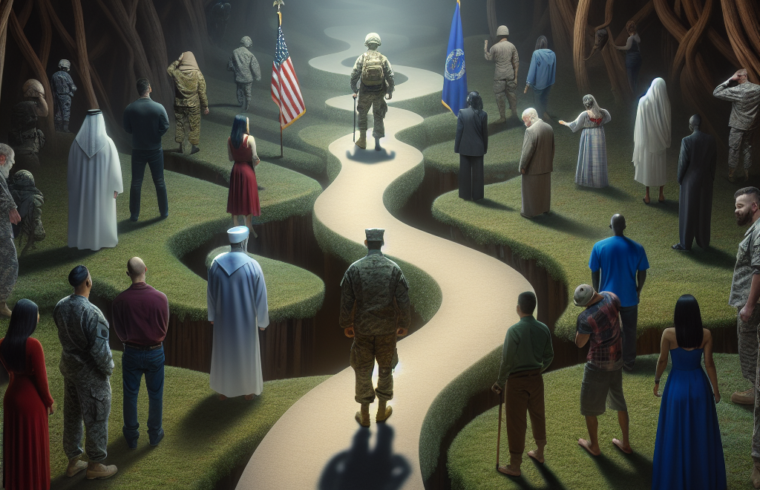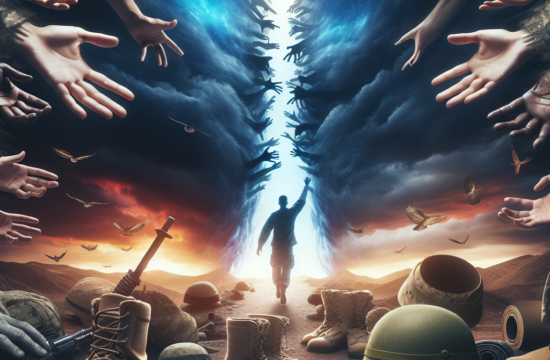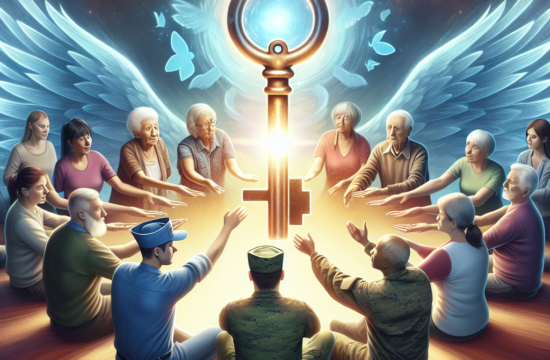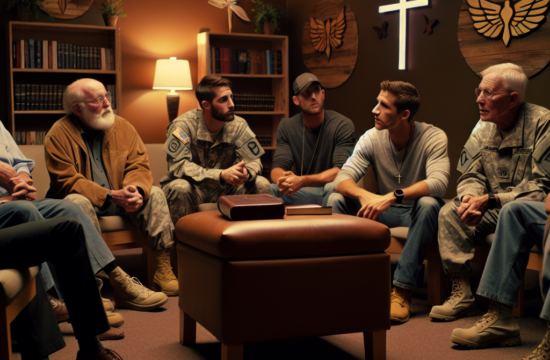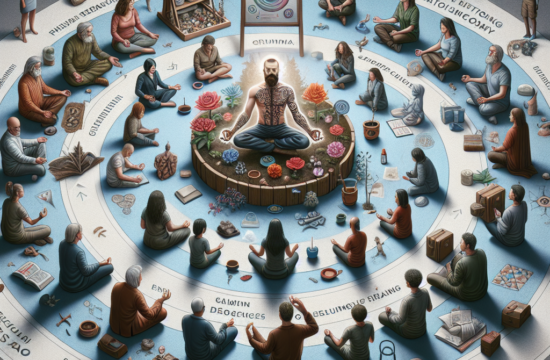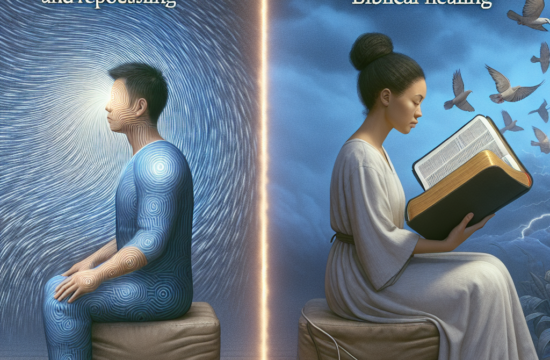==> Thank you for reading this post! Click Here If you are looking for support and Victory over PTSD.
Understanding PTSD in Veterans
What is PTSD?
As a veteran, I’ve had my fair share of experiences that left marks on me—some tangible, some not. Post-Traumatic Stress Disorder (PTSD) is a psychological condition that can occur in individuals who have experienced or witnessed traumatic events. For many veterans, it’s a challenge that seems to cling to us, a powerful reminder of the past. We often hear it described like a shadow you can’t shake off.
Understanding PTSD means delving into the emotions and reactions that come along with it. Symptoms can vary widely from flashbacks, severe anxiety, to uncontrollable thoughts about the event. This isn’t just a scab; it’s an ongoing battle in the mind that requires patience and understanding, both from within and from those around us.
One of the first steps towards healing is acknowledging that PTSD is not a sign of weakness. Many of us carry this weight for years, often out of a sense of duty or fear of judgment. Facing this issue head-on is pivotal for recovery, which makes understanding PTSD so important for every veteran looking to reclaim their peace.
Recognizing the Symptoms
Recognizing the symptoms of PTSD in ourselves and others is crucial. Sometimes, we might dismiss our own struggles, thinking we’re just having a rough patch. But it’s vital to be in tune with one’s mental state. Symptoms can manifest in various ways—maybe it’s that sudden burst of anger or an unexplained anxiety during uneventful moments. Each person’s experience is unique, but reflecting on our emotional responses helps in understanding our triggers.
That being said, I found it comforting to journal my feelings and reactions. Writing down these moments not only gave me insight into my behavior but also helped me pinpoint specific triggers. It may sound cliché, but putting pen to paper became an effective tool for me in this journey.
Being open about our symptoms around trusted friends or family can create a support network. Whether it’s a buddy from the service or a family member, sharing experiences can not only strengthen bonds but also help us feel less isolated in our battle with PTSD.
The Impact of PTSD
The aftermath of experiencing PTSD can stretch beyond just ourselves; it can affect our families, friendships, and professional relationships. It’s not uncommon for veterans to struggle with reintegrating into civilian life—sudden mood changes or emotional outbursts can put a strain on loved ones. I’ve witnessed this firsthand, and it’s heartbreaking.
Communication is key. Explaining my experiences to loved ones wasn’t easy, but it helped them understand what I was going through. They could see it wasn’t just me being distant or angry; it was an internal struggle that I needed their support to overcome. This understanding goes a long way in mending relationships and building a stronger bond.
The impact of PTSD extends to daily functioning. For some, tasks we once managed with ease can feel insurmountable. Be it holding down a job or maintaining friendships, the shadows can loom large. It’s super important to identify these struggles early on and seek help; it’s the bravest thing we can do.
Finding a Support System
Why Support is Essential
One of the most profound lessons I learned on my journey was the immense value of a good support system. Trying to go it alone often led to feelings of loneliness and helplessness. It’s easy to feel isolated, but surrounding yourself with a trusted group—whether friends, family, or fellow veterans—can create a safe harbor.
During my darkest times, I discovered local veteran support groups. The camaraderie was incredible! Sharing experiences with others who “get it” made a world of difference. It’s not about fixing the problem for each other but lending an ear and offering shared experiences.
Sometimes, just knowing there are others navigating similar struggles can lift the weight off your shoulders. Embracing this kind of camaraderie is crucial to overcoming the sense of isolation PTSD often brings.
Finding Professional Help
While friends and family play an integral role, there’s no denying the importance of professional help. Seeking therapy might seem daunting, but I found it to be a vital step. A qualified therapist experienced in trauma and PTSD can offer tools and coping strategies that none of my buddies could.
I remember my first session; I went in thinking I’d just share my story and maybe feel a little lighter. What I didn’t expect was to gain insights into my thoughts and patterns. A professional can help unpack the issues in a way that is constructive, allowing continued growth and healing.
Whether it’s one-on-one therapy, group sessions, or even art and music therapies, exploring what works for you is a big part of the healing process. Everyone’s path is different, and finding the right fit is like discovering the missing puzzle piece.
Utilizing Community Resources
There’s a wealth of resources out there for veterans navigating PTSD. Community centers, local mental health organizations, or even online platforms offer countless options for support. I can’t stress enough the importance of exploring these resources—they can offer everything from counseling to wellness programs focused on physical health.
I had a friend who found solace in an expressive arts therapy group; it opened doors he never thought possible for processing his emotions. There are solutions out there, and being proactive about seeking them out is empowering.
Engaging with community resources ultimately builds a sense of belonging. There’s comfort in numbers—feeling part of something larger than ourselves can help ease feelings of loneliness and despair.
Implementing Coping Strategies
Self-Care Practices
When you’re navigating PTSD, self-care isn’t just a buzzword–it’s absolutely necessary. Simple practices like mindfulness, exercise, or finding a creative outlet can do wonders for mental health. I started incorporating breathing exercises into my daily routine, and it was life-changing. Just taking a few minutes to breathe deeply can calm your racing thoughts.
Physical activity also became a cornerstone of my routine. Whether a brisk walk or hitting the gym, moving my body helped alleviate stress and improved my mood. It’s incredible how a little sweat can flush out some of the emotional baggage.
Prioritizing rest is crucial, too. Many veterans wrestle with sleep disturbances due to PTSD, and setting up a bedtime routine turned out to be a game-changer for my mental clarity and emotional resilience. Never underestimate the power of a good night’s sleep!
Get Support and Help with Recovery! Visit us for more Information and Support
Developing Healthy Habits
Building healthy habits is just as important. Reducing alcohol or caffeine intake significantly improved my anxiety levels. I had to confront hard truths about my coping mechanisms; it was difficult but necessary. Finding alternatives—like herbal teas or engaging in hobbies that brought me joy—has been genuinely rewarding.
Staying connected to my values also played a pivotal role in my recovery. Reminders of the principles I built my life around helped ground me during tough times. Whether volunteering or engaging in community events, living in alignment with my values became empowering.
Creating a balanced routine fosters stability; it’s like having a road map to navigate the tumultuous waters of PTSD. Making these small, manageable changes has served as gentle reminders that healing is possible.
Mindfulness and Meditation
Mindfulness and meditation can be transformative practices. Initially, I was skeptical—how could sitting quietly possibly help? But as I dove in, the benefits became undeniable. Being present in the moment brought down my anxiety levels and allowed me to pause before reacting to stressors.
Starting with just a few minutes a day gradually shifted my perspective. There are countless apps and online resources that guide you through mindfulness exercises and meditation techniques; I found a couple that worked wonders and made them a part of my routine. Consistency is key here!
Mindfulness isn’t just about meditation; it’s also about recognizing thought patterns. I started applying mindfulness to my daily activities, like eating or walking, savoring every moment, which has been an eye-opener for cultivating gratitude.
Embracing Recovery and Moving Forward
The Journey of Healing
Healing from PTSD is indeed a journey—a wildlife adventure, if you will. Some days will feel like a breeze, and others, like trying to climb Mount Everest. I’ve learned to embrace the ups and downs. Recognizing that healing isn’t linear helps set realistic expectations for myself.
Setting small goals can provide motivation. Celebrate the little victories! Maybe it’s getting out of the house on a tough day or completing a task that seemed overwhelming. Acknowledging progress, no matter how small, can be incredibly affirming.
Realizing that healing is a lifelong process can be liberating. It’s a reminder that I’m on my unique path, creating a life rich with purpose and meaning. The journey may be challenging, but it’s also filled with opportunities for growth and self-discovery.
Building a New Identity
As I walked this path, rebuilding my identity has become essential. PTSD can sometimes feel like it defines us—like a label we can’t shake off. However, digging deep into my interests, aspirations, and values helped forge a new sense of self beyond my experiences.
Engaging in new hobbies and reconnecting with passions I had forgotten also played a major part here. It’s liberating to explore and unveil new facets of yourself. I discovered a talent for painting, and it became an expressive outlet where I found both joy and healing.
Finding a new balance between who I was as a soldier and who I want to be in civilian life takes time. I began viewing myself as more than just a veteran with PTSD; I’m also an artist, a friend, a brother, and a learner. Each of these identities enriches my life in complex ways.
Sharing My Story
Lastly, I realized how powerful storytelling can be. Sharing my journey with others—be it through blogs, local events, or even talking to a friend—has brought a sense of freedom. It breaks the stigma and fosters compassion amongst veterans and civilians alike. By being vulnerable, I inspire others to share their own stories, creating a beautiful cycle of healing.
Sometimes, it can be tough to muster the courage to speak about our experiences, but each time I do, it feels refreshing. It’s about normalizing the conversation around mental health, breaking barriers, and encouraging veterans to seek help.
Telling my story has turned my pain into purpose. It’s a reminder that we are not alone in this journey, and as a community, we can uplift and support one another towards recovery.
FAQs
1. What is PTSD, and how does it affect veterans?
PTSD, or Post-Traumatic Stress Disorder, is a mental health condition triggered by experiencing or witnessing traumatic events. For veterans, it can manifest as flashbacks, severe anxiety, and emotional numbness, affecting daily life and relationships.
2. How can veterans find a support system?
Veterans can seek a support system through trusted friends, family, or through local veteran support groups. Engaging in community resources tailored for veterans can help establish a sense of belonging and shared experiences.
3. Why is professional help important for veterans with PTSD?
Professional help provides veterans with therapy techniques and tools for coping with PTSD. These professionals can offer insights and methods tailored to individual experiences, promoting effective healing.
4. What self-care practices are beneficial for veterans?
Practices like mindfulness, regular physical activity, and establishing a sleep routine are essential. It’s important for veterans to prioritize their mental and physical health to alleviate PTSD symptoms.
5. How can sharing my story help in recovery from PTSD?
Sharing your story creates a sense of community and connection, reducing feelings of isolation. It can encourage others to open up about their experiences, fostering a supportive environment for healing.

